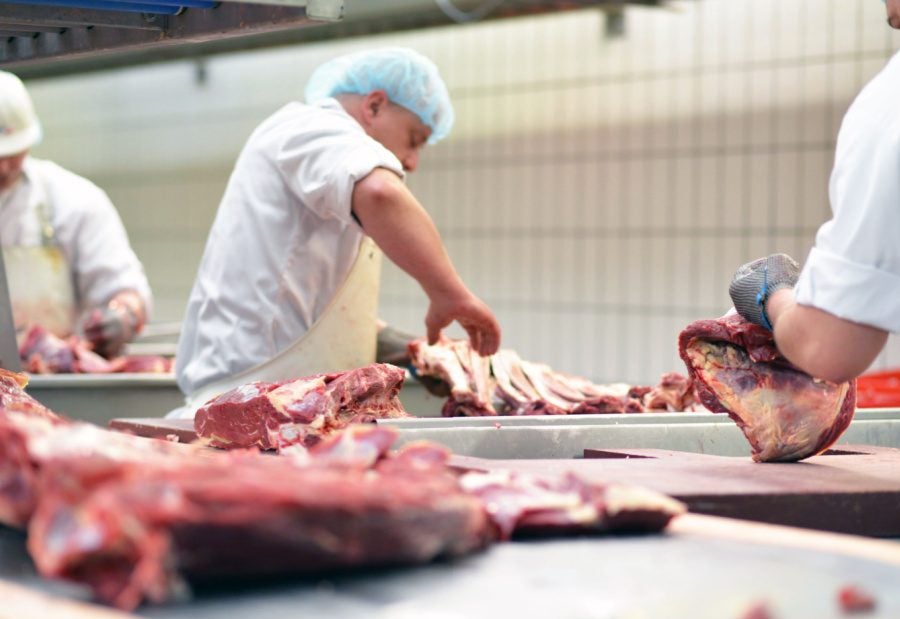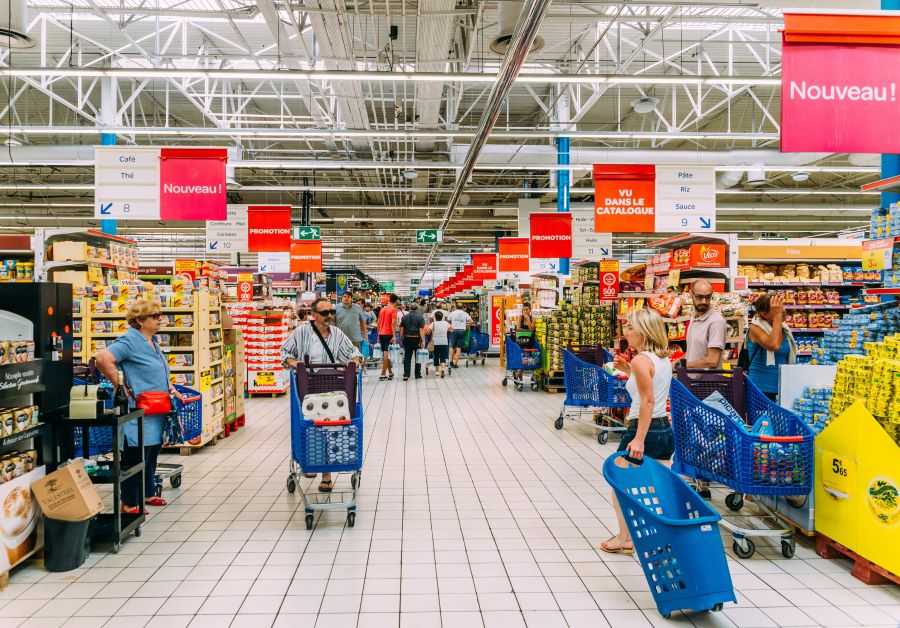Risk has been the pre-eminent theme in packaged foods M&A in the past 18 months or so, although it seems activity did not quite fall off a cliff in 2023.
Deal-making was, nonetheless, subdued as the Israeli war with Hamas, and the prospect of an escalation in the Middle East, added to the pervasive risk-off factors – input-cost-driven inflation and the effects on both consumers and food manufacturers, interest-rate hikes, higher energy prices, and the drawn-out conflict in Ukraine.
With inflation seemingly under control and observers speculating on when historically high borrowing costs will start to come down, Just Food speaks to M&A advisers and industry experts on their thoughts for M&A in 2024.
Jeroen van den Heuvel, Oppenheimer
The first half of 2022 was still fairly active but there was some spill-over effect from ’21, which was a super year. The second half of ’22 was dramatic, every deal was dying. In a sense, 2023 has been the same as the second half of ’22.
Interest-rate increases had a negative impact on valuations and the banks are overly cautious, they see risks everywhere.
Sellers are still looking at 2021 multiples and buyers say the world looks completely different from ‘21. More than any other year I’ve seen, the deals that did get done were vendor loans. It was the only way to get deals done because there was such a lack of financing.
The market is suddenly super active and there are a lot of processes being prepared for Q1
Jeroen van den Heuvel
Up to September ‘23, it was super quiet. Right now, everybody is working their ass off in M&A. The market is suddenly super active and there are a lot of processes being prepared for Q1.
In January and February, a lot of companies will come to market and a big chunk of that is private-equity firms trying to sell companies they bought in ‘16, ’17 and ‘18.
There are also privately-owned companies. Profits are exploding and all food companies are doing well. They put price increases in at the end of ’22, and then early in ‘23 raw materials, gas and energy prices began to come down and they kept the price levels.
Their margin is really increasing dramatically, so everybody who wants to sell should sell now. The big question is, are those transactions going to close? Is the financing there for all those deals? Are the banks going to change the way they perceive risk in January when the books open again?
If the financing is there, we'll probably see a lot of deals in the first half and if that happens, that trend will probably continue in the second half.
If the first half is a successful one, it will accelerate, then you will see after the summer an even higher level of activity. If the reverse happens and the financing isn't there and the gap between value expectations is persistent, I think the markets going to be completely flat for the rest of next year.
Most of the corporates I’ve talked to, they’re all looking for growth in health. What’s completely out of fashion is meat replacement.
It’s still early days but I do see more interest in direct-to-consumer. It’s really a new model and a really interesting segment. I’ve seen some deal activity there.
ChanChan Wang, Houlihan Lokey
A number of sell-side processes launched in late 2022 or early 2023 failed to complete because of inflation. You couldn’t really figure out a sustainable EBITDA margin because people were putting through price increases. But valuations are coming back this year.
If you look at all the buy-out funds on a global basis, a quarter of the assets in their portfolio they’ve been holding on to for more than six years and 50% they’ve had for more than four years. And they are under pressure to sell.
Over the next 12 to 18 months, the big question mark is how does a potential recession and consumer sentiment play into a specific sector or business? However, there are assets which will be coming to the market in the next six months.
The good-quality assets continue to trade at attractive valuations. There really is a scarcity value, which is driving that premium valuation.
I think 2024 has got to be better than 2023. Hopefully, there’s no major surprises, and with interest rates coming down and financing becoming more available, it can’t really be any worse than what we've seen in 2023.
It’s all pointing towards, in theory, a better 2024 and I think that’s pretty consistent with what we’re seeing with our own pipeline.
There is a willingness from the sell side wanting to come to market. From a buyer’s perspective, the private-equity houses are under pressure to deploy capital. I think they will be more active in 2024 and the strategics continue to be consolidating.
If you look at snacking, there’s ongoing consolidation. If you look at consumer health, that continues to be very resilient, and pet food is another category where we continue to see M&A activity.
Profitability is absolutely key, even for the VC investors before they even start talking about growth. Of course, they want 25% to 30% growth. But we are seeing lots of earlier-stage businesses focusing on cutting costs, overheads and making sure they are profitable but it’s tough.
Plant-based margins are so low in some cases that people are paying consumers to eat
ChanChan Wang
There is consolidation going on in the plant-based space, where the margin is so low in some cases that people are paying consumers to eat plant-based food, which is not sustainable. You’d hope after the consolidation, you will have some players that are stronger and more sustainable.
I think the fundamentals are still strong in pet food. How long that is going to last is a question mark, linked to the breeding [slowdown], the population growth. But at the same time, there’s consolidation, some backed by large-cap PE, and there is a scale benefit and more margin benefits to go after.
Alex Masters, Lincoln International
Across Europe over the last ten years, we’ve seen somewhere between 225 to 250 deals a year in food. And this year, we’re down to 187. It’s not falling off a cliff but deal volumes are down about 25%.
There’s certainly less activity but better businesses that have managed to pass on pricing and whose volumes haven’t gone backwards have been sold.
But where companies don’t need to sell or can afford to wait, or they’re not such good businesses, they basically haven’t been brought to market.
Certainly, bankers are hoping when they test the water in the new year the environment will be more forgiving. There will probably be a gradual thawing, an improvement in the first half, with more activity in the second half because a lot of that pricing inflation will have washed through, so the companies’ margins should start to get back to normal.
If there’s a receptive market, you will see the M&A market bounce back sooner. If sentiment is a bit more cautious it will take time to build. If the crisis in Israel spreads throughout the Middle East, then obviously all bets are off.
There will probably be a gradual thawing in the first half, with more activity in the second half
Alex Masters
We’ve had a good 2023 selling to strategics. There might be lots of assets out there but strategics are more disciplined and they will only buy if a company fits in the right verticals and in the right geographies.
A lot of good businesses have been built by private equity. For strategics, many of these businesses might make financial sense but often they've got the wrong geographical mix, and/or the wrong product mix.
I think as we go into 2024, private equity will increasingly see business performance getting better. So I think there’ll be more PE buyers than there have been in 2023.
VC funding in Europe this year is down by about 50%. Very well-placed companies, especially in pet food, are still getting financing but a lot of companies have failed in raising financing because the VC market is much more difficult. VCs still have a lot of capital but they’re more cautious and they're keeping some of the powder dry.
Historically, the mantra was growth at all costs and now it’s balanced growth. VCs want to see growth, but they also want to see, if not margin today, a clear route to making margin in the next 12-18 months, which many start-ups historically couldn’t have done.
Andy Searle, AlixPartners
M&A activity is going to pick up in 2024 but the volume of transactions is likely to be low. Trying to match buyers and sellers is going to remain a challenge.
There are many companies looking to reshuffle their portfolio to focus on higher growth, more profitable areas and divest unloved brands and assets, or to enter new categories and markets.
With the slowness in the market over the last 12 to 18 months, there’s a backlog of deals, although some have gone through.
There are also a number of financial investors who are at the end of their ownership period looking at exiting. Financial investors with a reasonable amount of firepower and money to deploy sitting on the balance sheet are also looking for investments.
The complications are that financing costs are still reasonably high and, in some consumer sectors, growth through Covid has tailed off a bit, so there’s uncertainty about buying at the peak or waiting to see what the true performance looks like.
The big issue for next year is going to continue to be one of value misalignment – the value expectations of sellers against what buyers are willing to pay.
I expect to see more deals, particularly more minority investments from financial sponsors who need to deploy their capital – private equity or joint ventures. Minority investments or joint ventures allow some of that valuation conversation to be deferred to better times.
The big issue for next year is going to continue to be one of value misalignment
Andy Searle
Another risk factor is increasing merger authority activity, the challenge from competition authorities about various deals, particularly if there are buy-and-build strategies or people buying adjacent businesses.
There is sponsor, or financial investor, interest in foods that are potentially less brand-exposed or products that are more value-based to consumers or less exposed to some of the macroeconomic consumer sentiment trends.
It’s going to be interesting whether people continue to build private-label businesses. There are lots of sub-categories with lots of players – frozen food and ready meals, for example – with fragmented markets where you could see a value creation play through consolidation.
There’s also still fragmentation in some spaces like the bakery or frozen sector where there's been a number of players that have done some consolidation but there's lots of other smaller, regional local players that can be snapped up.
There will still be investors and interesting equity stories where there are brands that are growing significantly and need external financing to deliver the next stage of growth, which could be via venture-capital funds, private equity or corporate venture arms.
















